Short-Wavelength Infrared Photodetector (SWIR)
Based on the transmission properties of the atmosphere, the atmospheric window is divided into the following three sections: short-wave infrared (SWIR), mid-wave infrared (MWIR), and long-wave infrared (LWIR). Among these, SWIR, which has a wavelength range of 1-3 µm, exhibits unique and excellent properties. Compared to visible light, SWIR light has better penetration capabilities in harsh weather conditions (such as night, fog, and dust). Unlike MWIR and LWIR light, SWIR light produces high-resolution natural images because the reflected light is closer to visible light and farther from other infrared wavelengths. More importantly, the relevant devices can operate at room temperature without cooling, which is beneficial for reducing the cost and size of the equipment since thermal imaging is not involved.
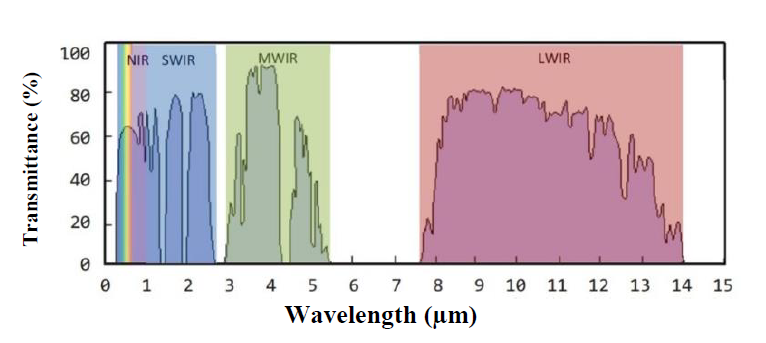
Figure 1. Atmospheric transmittance versus wavelength
In this field, the first practical application was the PbS-based SWIR photodetector in 1940, which reached a response wavelength of 2500 nm. In the 1970s, infrared array imaging technology began to emerge. With the development of important growth methods such as Molecular Beam Epitaxy (MBE) and Chemical Vapor Deposition (CVD), the imaging resolution based on the most widely used InGaAs SWIR photodetector reached 1920 × 1280. Additionally, the rise of optical fiber communication technology has further encouraged the development of SWIR photodetectors.
Operating Wavelength Range of SWIR

Figure 2. Electromagnetic spectrum and application areas of the regions in the spectrum
Short-wave infrared (SWIR) light is generally defined as light in the 0.9–1.7 μm wavelength range, but it can also be classified as light in the 0.7–2.5 μm range. Traditional pure Si-based photodetectors are not suitable for SWIR detection due to bandgap (1.12 eV) limitations. Therefore, a number of long-spectrum (i.e., narrow-bandgap) semiconductor materials, including InGaAs, Ge, InAs, and HgCdTe, have been studied for a long time and have a wide range of industrial applications. Among these, InGaAs photodetectors are the primary photodetectors used in SWIR imaging, covering the typical SWIR range and extending to as wide as 550-2500 nm.
SWIR Photodetector Working Principle
A photodetector is a device that converts an electromagnetic wave signal (photon) into an electrical signal (such as current or voltage). The basic working principle of photodetectors is based on the photon absorption process in semiconductors. The following figure shows a photon absorption diagram in a semiconductor.
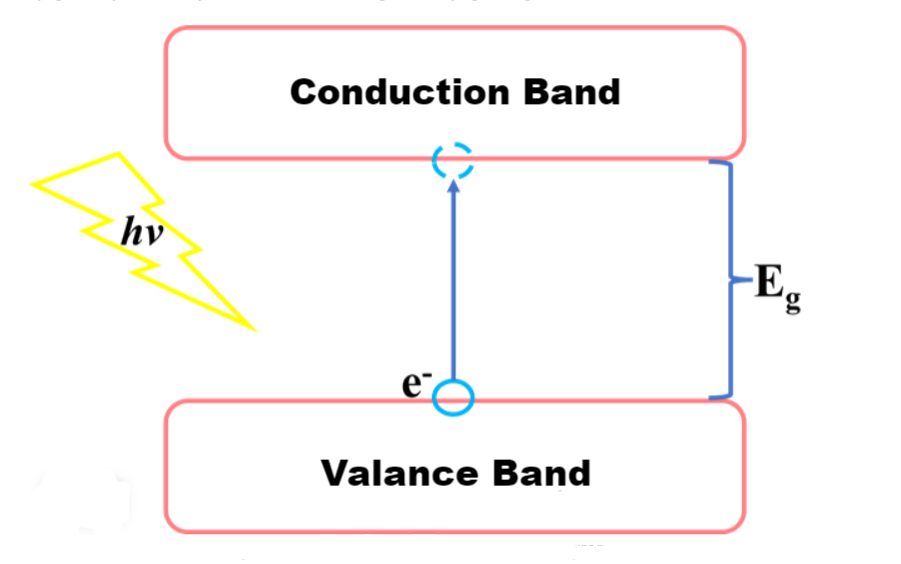
Figure 3. Photon absorption diagram in a semiconductor
A photon with energy equal to or greater than the band gap of the semiconductor is absorbed by an electron in the VB, and this absorbed electron moves in the CB, leaving a hole behind. Thus, an excess electron-hole pair is formed above the thermal equilibrium values. A photodetector structure consisting of a pn junction can be used to collect these carriers. At the interface between the p-type region and the n-type region, the majority carriers in the n (p)-type material move toward the p (n)-type region. A depletion region forms, and the direction of the internal electric field is aligned with the direction of electron movement in the depletion region. A voltage is applied by connecting the negative terminal to the p-type region and the positive terminal to the n-type region. When the negative (positive) terminal is connected to the p (n)-type region, the majority carriers (electrons) move toward the terminal to which the voltage is applied, thereby creating an excess of electrons and holes in opposite directions. As the applied voltage increases, it reaches a breakdown value, allowing current to flow through the structure.
Advantages of SWIR
SWIR provides the high resolution required for imaging by reflecting or absorbing photons from an object. SWIR imaging systems operate in much the same way as visible systems. SWIR light is invisible to the human eye. Therefore, it can detect objects that are difficult or nearly impossible to distinguish with visible light and visible cameras, thanks to its specific characteristics.
One of the advantages of imaging in the SWIR band is that SWIR light is not affected by atmospheric fog, haze, or smoke. Unlike visible light, which is sensitive to scattering by atmospheric fog, haze, or smoke, SWIR light passes through submicron particles without Rayleigh scattering. Since Rayleigh scattering occurs less frequently at longer wavelengths, infrared light can pass through fog, dust, and haze without being affected by scattering. As a result, SWIR photodetectors can produce long-range, high-resolution natural images even in harsh weather conditions because the light reflected in the SWIR band is closer to visible light and farther from other infrared wavelengths.
SWIR Application Areas
Active Imaging and Advanced Vision Support
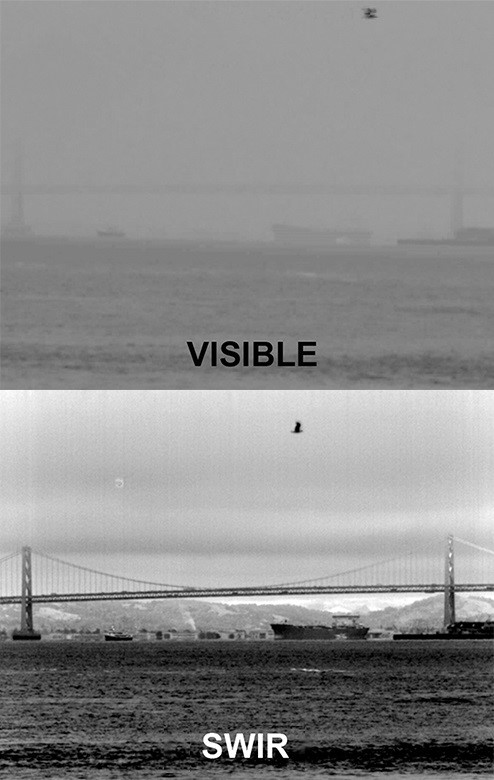
Figure 4.Imaging with a normal camera and SWIR camera in foggy weather
Active SWIR imaging is ideal for long-range reconnaissance and surveillance due to its use of invisible laser illumination and pass-through imaging. As the SWIR photodetector advances into the infrared wavelength, it produces higher contrast images in fog, mist, rain, haze, and other challenging atmospheric conditions due to less scattering. SWIR cameras are then used for active imaging and advanced vision assistance in automotive, aviation, security, and surveillance applications.
Food Classification

Figure 5. Separation of salt, sugar, and carbonate using eye and SWIR imaging
SWIR can also be used to search for water content in materials that may be useful for agriculture, food inspection, and forestry applications. Any object containing water will strongly absorb SWIR wavelengths at one of two main absorption lines (one at approximately 1.45 microns and the other at approximately 1.8 microns). SWIR imaging enhances the visibility of objects containing moisture. A commonly used example is salt and sugar. Both appear as small white crystals when viewed in visible light, but they have significantly different reflective properties in SWIR.
Solar Panel Quality Inspection
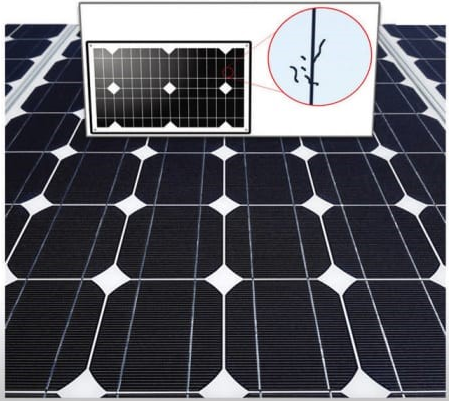
Figure 6. Solar panel inspection using SWIR imaging
Another application for SWIR imaging systems is solar panel inspection. With the increasing demand for more sustainable energy sources, there has been a significant increase in the use of solar panels. SWIR can be used to identify dead spots or weak areas in a solar cell and help verify the cell’s efficiency. In general, SWIR can be used for quality control.
Medical Applications
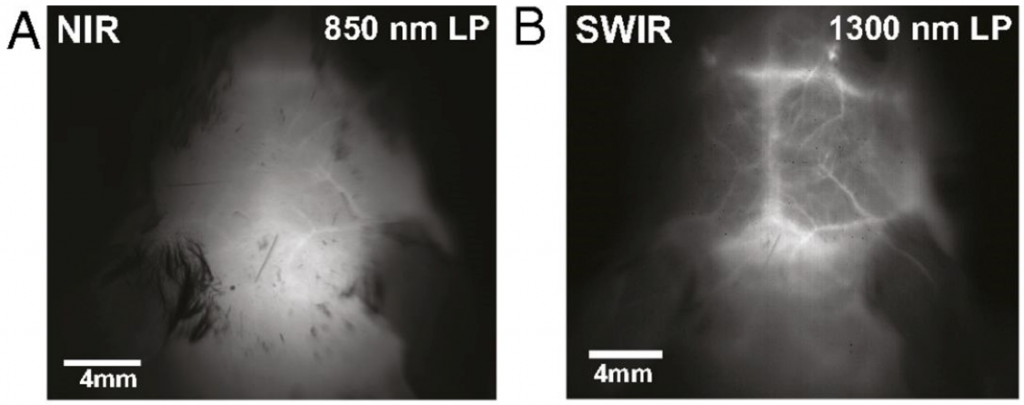
Figure 7.(a) NIR and (b) SWIR images of the brain vascular system in mice.
Imaging in the SWIR band also enables in-depth examination of biological processes in living organisms. The transparency of human bones in the SWIR band makes it possible to observe the microvascular systems in the human body using a light source. Recent studies have shown that SWIR imaging provides unprecedented imaging opportunities, including contactless monitoring of vital signs, creation of microvascular blood flow maps, real-time metabolic imaging, and molecular-targeted imaging.
Extended Wavelength Infrared Photodetector
While InP substrate lattice-matched InxGa1-xAs (x=0.53) photodetectors are commonly used for night vision, photodetectors with extended wavelengths do not allow imaging beyond ∼1.7 μm in the SWIR range. There are numerous applications, including hyperspectral imaging, that require cutoff wavelengths above 2 μm. The HgCdTe semiconductor material is used for photodetectors operating in the SWIR band. The production cost of II-VI HgCdTe photodetectors is generally higher than that of III-V counterparts due to the relative difficulty of scaling and processing these detectors. Although InxGa1-xAs (x∼0.8) appears suitable for detection technologies with cutoff wavelengths above 2.5 μm, the significant lattice mismatch with both GaAs and InP in this composition causes serious performance degradation due to crystal quality deterioration in photodetector properties, making it the primary issue for photodetectors. Therefore, research efforts on extended wavelength InxGa1-xAs photodetectors have been limited compared to lattice-matched InxGa1-xAs SWIR detectors.
CUNAM Projects
CUNAM is one of Turkey’s most established centers conducting R&D activities and growing high-quality InGaAs-based photodetector crystals for short- and long-wavelength infrared photodetector technologies. It also has the first As/P-based MOVPE system established in our country.
The research and development activities initiated under the KANGAL Project, supported by the Undersecretariat for Defense Industries, with significant contributions from ASELSAN, ODTU, and CÜNAM, resulted in the successful development of detector prototypes within ASELSAN. The figure shows a camera image obtained from SWIR crystals produced at CUNAM. Thus, our country has gained significant knowledge and technology in SWIR detector production. CUNAM launched the “Short-Wave Infrared (SWIR) Epitaxial Layer Development” project in 2020 with ASELSAN’s support, aiming to improve detector performance by developing SWIR epitaxial layers to be produced within the scope of this project.
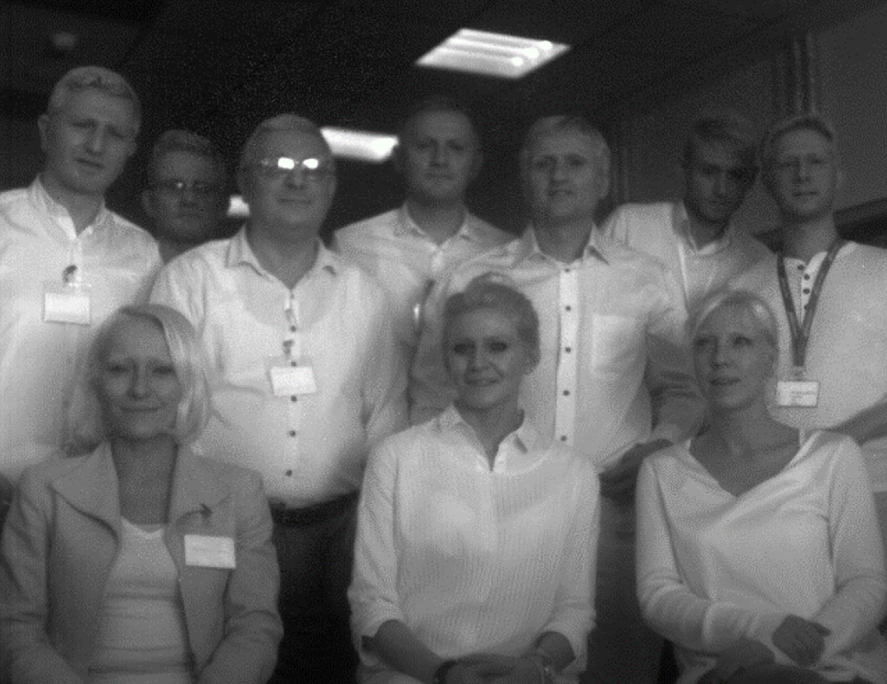
Figure 8.Camera image taken from SWIR crystals produced within CÜNAM.
References
Cao, F., Liu, L., & Li, L. (2023). Short-wave infrared photodetector. Materials Today, 62, 327-349.
Arslan, Y., Oguz, F., & Besikci, C. (2015). Extended wavelength SWIR InGaAs focal plane array: Characteristics and limitations. Infrared Physics & Technology, 70, 134-137.
https://nedinsco.com/technologies/swir-camera-technology/
https://new-imaging-technologies.com/news/galaxy-in-swir-beauty/page/2/?et_blog
Salimi, M., Roshanfar, M., Tabatabaei, N., & Mosadegh, B. (2023). Machine Learning-Assisted Short-Wave InfraRed (SWIR) Techniques for Biomedical Applications: Towards Personalized Medicine. Journal of Personalized Medicine, 14(1), 33.